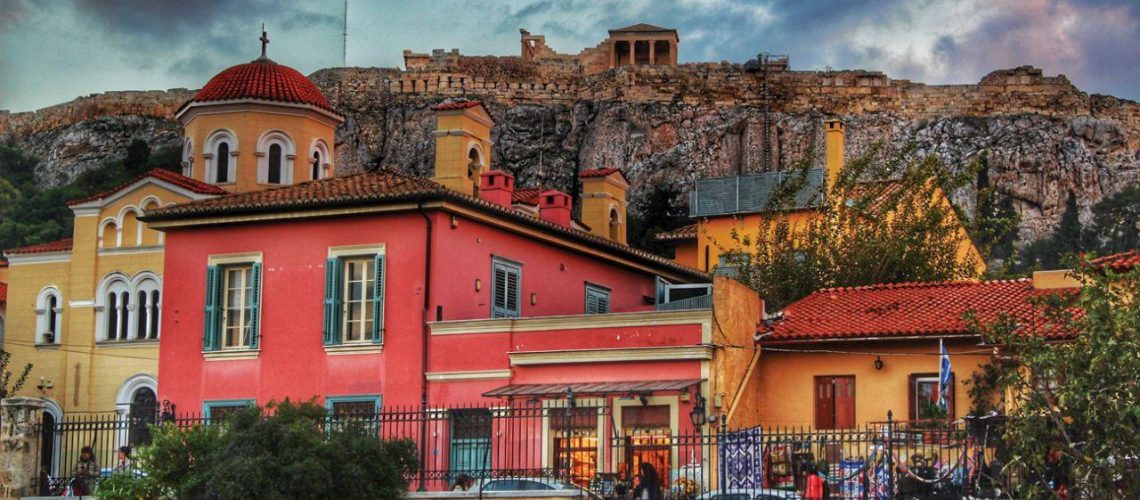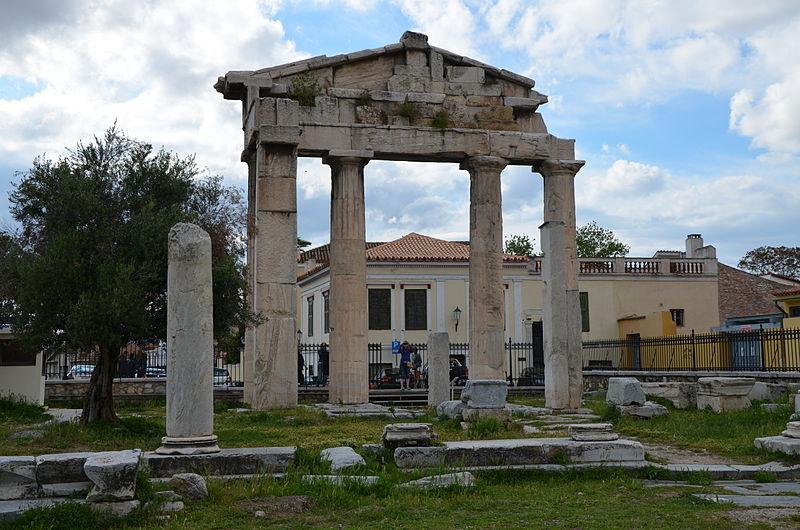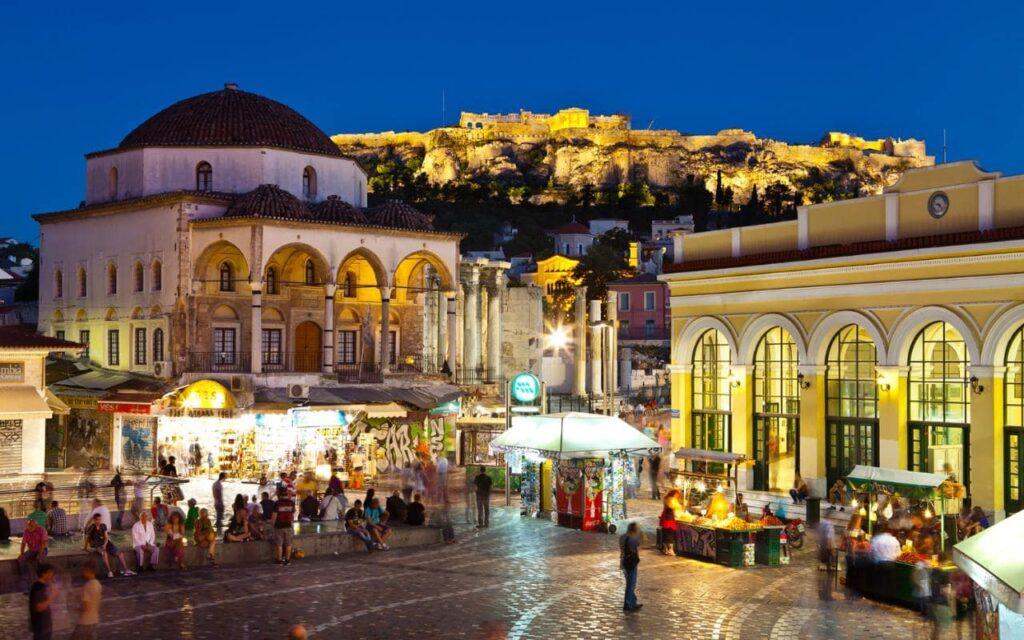
If you ask some of them what they come to see in Athens, you would surely get the same answer: the Acropolis, the Parthenon and all the other sights and attractions that tourists are most familiar with. However, Athens has much more to offer than just the same old, same old, ordinary sightseeing opportunities. So, taking a walk in the 5 most picturesque neighborhoods of Athens is the ideal way to get to know the city!
Just below the Acropolis and almost up to Syntagma Square you will find Plaka, the oldest neighbourhood of Athens. In this part of the city you can do everything: walk along the narrow cobbled streets, buy your souvenirs from one of the local tourist shops, admire the history around you.
After visiting the Acropolis, the Parthenon and the museum, your next destination is Plaka. Wandering through the narrow streets, most of which are paved or paved with marble, you will see buildings of remarkable architectural value. In the heart of the neighbourhood, you will find two major streets, Kythathenaion and Adrianou, interconnected by picturesque alleys and paths. Pedestrian streets ideal for walks, with no vehicles to disturb you, guide you through the part of Athens to be explored, a place that brings together elements of Greek, Roman and Turkish origin.

Apart from the local tourist shops, the scattered traditional restaurants and picturesque cafes, you will also find many archaeological sites. Leaving Dionysiou Areopagitou Street and heading towards Byron Street leading to Monastiraki Square, the first monument you will see is the Sponsoring Monument of Lysicrates. The monument was built in 335/4 BC and by the sponsor of the dramatic performances in honor of his victory. Next, you will find the Roman Forum, where you can also admire the Tower of the Winds, the Fethiye Mosque and the Gate of Athena the Chieftain. Opposite the Tower is the Medreset Gate, originally a theological school and then a prison during the Ottoman rule in Greece. Next to it is the Museum of Greek Folk Musical Instruments, which presents the musical tradition and history of Greece.

The last part of your trip around Plaka should be Anafiotika. Just below the east side of the Acropolis and above Plaka, is the small neighborhood built by craftsmen and architects from Anafi. Walking through its narrow alleys, you reach the spot with the most impressive view of Athens and Lycabettus below your feet. If you want to feel like you’re walking the streets of any Aegean island, you don’t have to look far. All you have to do is visit Anafiotika.
After visiting the Acropolis, the Parthenon and the museum, your next destination is Plaka. Wandering through the narrow streets, most of which are paved or paved with marble, you will see buildings of remarkable architectural value. In the heart of the neighbourhood, you will find two major streets, Kythathenaion and Adrianou, interconnected by picturesque alleys and paths. Pedestrian streets ideal for walks, with no vehicles to disturb you, guide you through the part of Athens to be explored, a place that brings together elements of Greek, Roman and Turkish origin.

Leaving Plaka and Anafiotika behind you and crossing Areos Street, passing by the Library of Hadrian’s, you will find yourself almost in the middle of Monastiraki Square. The square is the point of convergence of cultures and multiculturalism. There you will experience the way in which people of different cultures, religions and mindsets meet and coexist. The square is surrounded by small shops and restaurants, and you can also admire the Tzistaraki Mosque, which is an annex of the Museum of Greek Folk Art. If you get a chance, visit the small Church of Pantanassa (or Assumption of the Virgin Mary), opposite Monastiraki station.

Your next destination is the wondrous area of Psyrri. The area is known by locals and tourists alike for its café-bars and tavernas, offering live music and all kinds of eateries. If you visit Athens, you can’t help but visit this area and admire its history and quaintness, recalling an Athens of the past with modern features scattered everywhere. Wander the alleys and streets, either by walking or riding a handmade wooden bicycle and surrender to the history that the Psirri area has to offer.

Between Ermou, Pireos and Asomaton streets, you will find the archaeological site of Kerameikos. In ancient times, the area was originally a settlement of potters and potters due to the rich deposits of the river Eridanos. However, the areas near the river suffered from the constant overflow of the river. This made the place difficult to work and live in, and it became one of the most important cemeteries of ancient Athens.
However, Kerameikos today is a huge area of modern Athens, next to Gazi with the old gas factories of Athens, offering many opportunities for fun, entertainment and, of course, a vibrant nightlife. Many people, even locals, confuse the two districts because of the name of the metro station “Kerameikos” with its exit in the Gazi area. In Gazi you will find many café-bars, but even more clubs offering music options for all tastes. Good tavernas and restaurants can be found in the strangest locations, from the streets to underground spaces that can only be discovered with the suggestion of someone in the know.

When you visit Kerameikos and Gazi, don’t miss Technopolis, the City of Technology. Technopolis is one of the most famous cultural sites today and an industrial museum dedicated to the memory of the great Greek composer Manos Hadjidakis. It hosts a wide range of events, such as seminars, music concerts, exhibitions, etc., either in open space or in one of its buildings, each bearing the name of a famous Greek writer: Andreas Embiricos, Angelos Sikelianos, Yannis Ritsos, Kostis Palamas, T. Papatsonis, Konstantinos Cavafy, Kostas Varnalis.
Just below the Acropolis, near Plaka, is Koukaki, which is quite reminiscent of a village. That’s why you don’t have to walk so much if you avoid walking. Koukaki may not be as picturesque and glamorous as other Athenian districts. It promises, however, to dazzle you with its alternative atmosphere, right in the middle of the urban landscape with its ever-changing daily routine.
Here you will find a quiet place, a refuge from the hectic daily rhythms of the city. Strolling along the sidewalks of the area, you can explore unique shops, traditional and modern cafes, bars and must-visit museums. The first is the National Museum of Contemporary Art, which exhibits a collection that is constantly enriched by works by Greek and foreign artists. Second is the Ilias Lalaounis Jewellery Museum with a permanent collection of jewellery and microsculptures, constituting an unparalleled representation of jewellery art in Greece.
For lovers of architecture, Koukaki is the neighborhood that preserves the neoclassical style of the old buildings, the remnants of a bygone era of unparalleled beauty. For those of you who consider walking the best way to really get to know a place, then take a stroll around the neighborhood. When you’ve had your fill of what you see, it’s time to visit Philopappou Hill and connect with nature. Take a stroll to the Philopappou Monument, the ancient Koilis Street and Socrates’ prison.

Our next destination, returning to Syntagma Square and the National Garden, is Exarchia. They are located between Kolonaki and Alexandra Avenue, better known as the student area of Athens. The area has a lot to offer and combines the old, the alternative and the modern, all in a bohemian environment. Exarchia has nothing to envy compared to other neighbourhoods in Athens. They are famous for their bars, friendly cafes and quiet cafes and many publishing houses and bookstores, most of which sell second-hand books and offer products at great prices. But locals will give you a darker picture of the area: hectic, rebellious and dangerous on march days, which you should probably avoid.
One of the main attractions of the neighbourhood is the National Archaeological Museum, the largest museum in Greece. Numbering more than 11,000 exhibits, it allows you to explore the evolution of Greek civilization from prehistory to recent antiquity. Another interesting attraction is the Epigraphic Museum, the largest of its kind with inscriptions on stones, offering a better understanding of ancient Greek history.

Exarchia also has its own history. The centre of the neighbourhood is Exarchia Square, always full of people either sitting at a stall or just passing by. Around the square there are small cafes and fast-food restaurants, offering a wide variety of food and drinks. What you should look for in Exarchia are its countless taverns. Their culinary choices, accompanied by a cool beer or some wine, are the perfect way to experience Exarchia to the fullest.
65 Arkadias st.,
115 27 Athens, Greece
Phone: +30 6936 952113
Email: info@littletravellers.gr
